READY TO GET STARTED?
REQUEST A FREE ESTIMATE
Fill out the form below or call (888) 466-7849 for a free, no-obligation estimate.
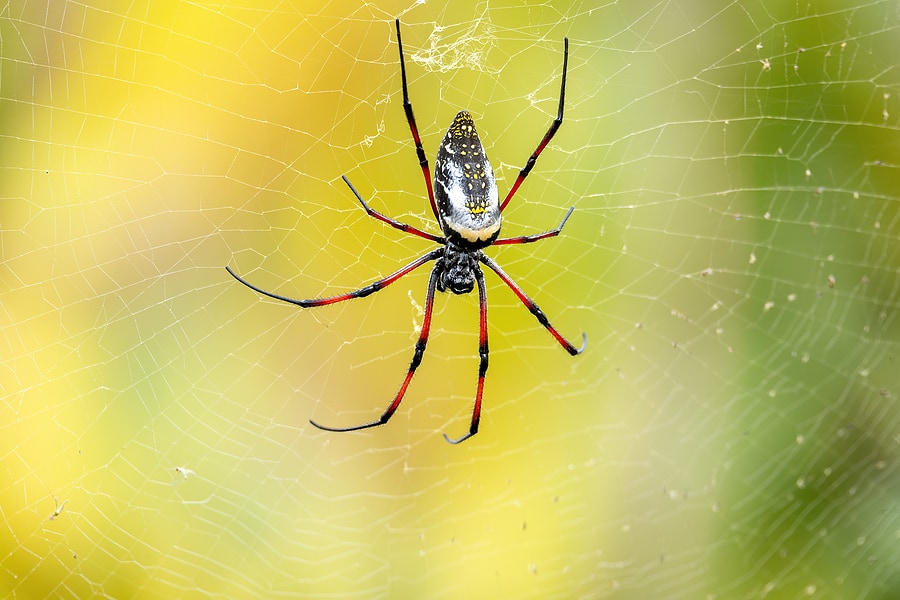
As the fall season settles in, many homeowners in Georgia are gearing up for the seasonal battle against fall pests. Among the various critters that make their way into our homes and gardens, orb weaver spiders are a common sight. While these eight-legged arachnids may appear intimidating, understanding their characteristics and behaviors is essential to maintaining a pest-free environment.
Orb weavers belong to the Araneidae family and are known for their distinctive circular webs, which they expertly spin to trap flying insects. These spiders come in various colors, shapes, and sizes, but they all share some common features:
Orb weaver spiders are outdoor creatures, and you’ll most commonly encounter them in the following places:
Before rushing to eliminate orb weaver spiders from your property, it’s essential to consider both the advantages and disadvantages they bring.
If you wish to minimize orb weaver spider presence around your home, here are some practical tips:
Don’t let orb weaver spiders and other fall pests disrupt your peace of mind this season. Take proactive steps to manage and prevent their presence by reaching out to our expert pest control team. Request a free pest control quote today and ensure a pest-free environment for you and your family.
In conclusion, while orb weaver spiders can be beneficial for natural pest control, they may also pose challenges for homeowners. Balancing their advantages and disadvantages and taking preventative measures can help you enjoy a pest-free home during the fall season.
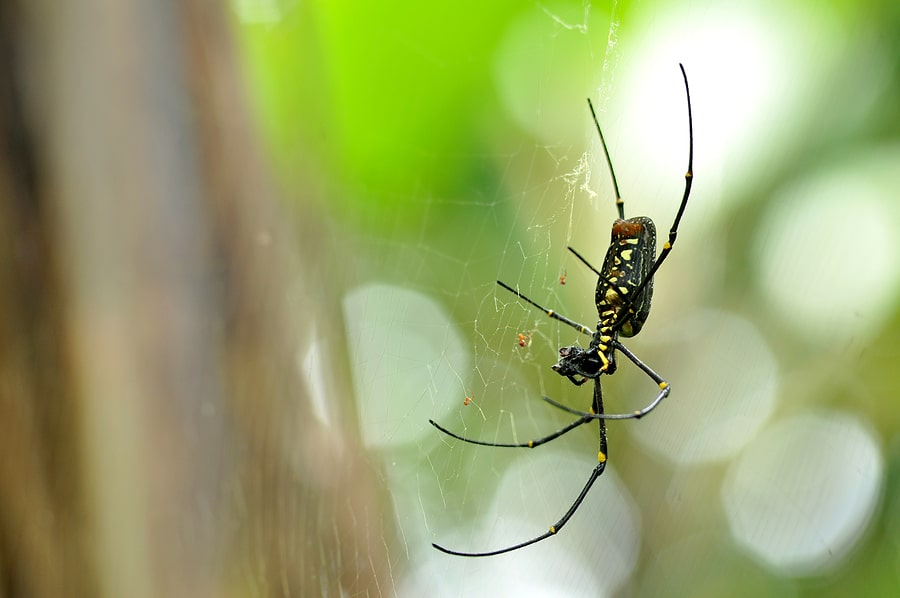
Orb weavers are a broad family of spiders found throughout the United States and Canada. The orb weaver is known for the large, majestic web it weaves. These webs are commonly found on tree branches, in tall grass, bushes, and around light fixtures. They are often found where abundant food sources are available (in your yard or garden, near lights that are on at night, etc.).
Most orb weavers appear in the spring when their eggs hatch, but they aren’t really noticed until late summer and fall (when the males go out in search of their mates). Female orb weavers hang out in their webs, eating and waiting on a male to come find them. Males are always on the move, rarely building webs, searching for a partner. At the end of fall, females will lay their eggs and then die during the first frost. Males typically die after mating. Because of their structure, orb weaver eggs can survive the cold weather of winter. When the weather warms up in the spring, the eggs hatch, releasing a new brood of orb weaver babies.
These spiders are known to be docile and non-aggressive. They rarely bite and aren’t considered dangerous to humans or pets. In fact, they can be beneficial to have around as they trap and eat other pests that can infest your home.
Prevention is unnecessary with orb weavers unless their web is built in an inconvenient location or a location with high human traffic. They cause no structural damage. You can lessen your chances of encountering orb weavers by:
If you have a problem with orb weavers or any other pests, contact your local pest control company.
Common Winter Wildlife to Lookout For
How To Identify A Water Moccasin
Keep Ants Out of Your Home this Spring
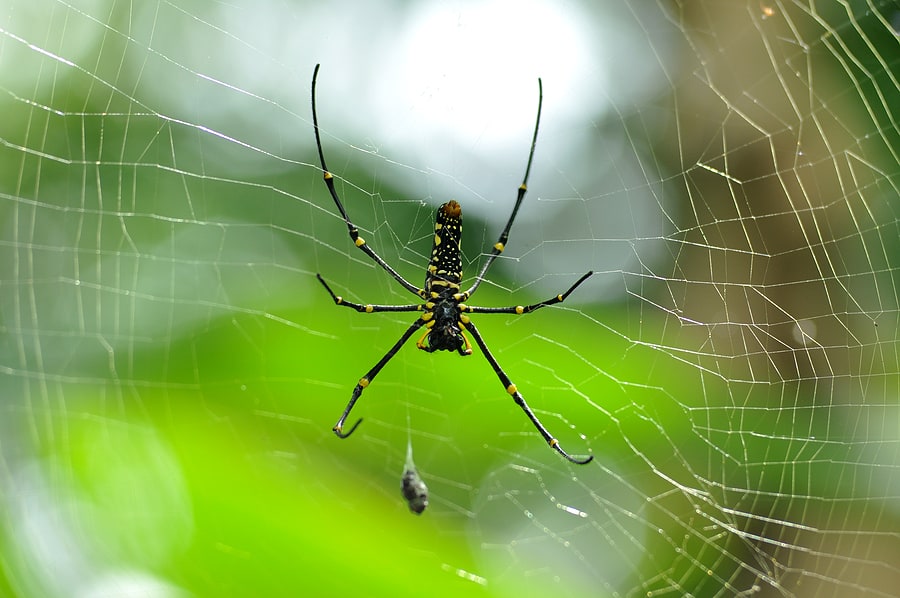
Orb weavers can be scary looking with their large size and the giant webs they weave. But are they dangerous to humans or pets?
The short answer is no. Although these spiders can bite, they lack the potent venom needed to cause serious damage to humans or larger animals. Their bites are comparable to bee stings. These pests are quite docile and usually non-aggressive; they are more likely to flee from you than to attack and bite you if disturbed.
Orb weavers are garden pests, often found in bushes, trees, wood piles, yard debris, under porches, under roofs, and under eaves. They get their name from the large, circular, wagon wheel shaped webs they weave. Because their family is so diverse, these spiders come in a variety of colors and markings, with some of the more common ones being bright yellow and black.
Orb weavers eat a variety of small insects such as mosquitoes, beetles, moths, flies, and wasps. They are quite beneficial to have around as they help keep other pest populations under control.
If you have an issue with spiders or other pests, contact your local pest control company for an evaluation and treatment options.
Add Some Shine to Your Crawl Space
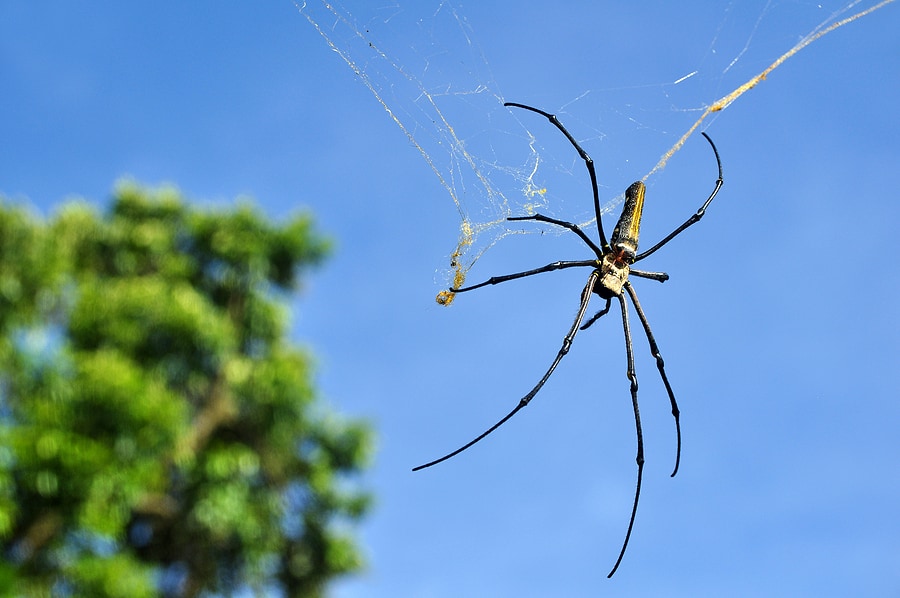
Orb weaver spiders, or orb weavers, are a group of spiders named for their ability to produce round, orb-like webs. They make up the family Araneidae, one of the most diverse groups of arachnids in terms of both size and appearance. Despite their differences, they all have one thing in common: their ability to create large, majestic webs. These webs are circular in shape with grids similar to the spokes of a wheel. Some webs can even measure up to 3 feet in diameter. Let’s take an in depth look to learn all you need to know about orb weavers.
Orb weavers have body types similar to other spiders with 8 legs; 2 body parts (a cephalothorax and abdomen), and chelicera (mouthparts that look like fangs). They range in size from 1.5 to 3 cm. Some are brightly colored, while others are brown or gray. They have large abdomens and hairy legs.
Orb weavers are typically nocturnal and will often build or repair their webs at night. They do not hunt or wander for their food. Instead, they utilize their expansive web making skills to catch their prey. They will usually sit in their webs after they are built waiting for prey to become ensnared. Sometimes they will hide nearby and leave a trigger line of silk connected to the web. The vibrations from the prey run down the line and alert them. They will then bite and paralyze their prey and wrap it in silk to save for dinner later. Orb weavers are most commonly seen in late summer and early fall.
An orb weaver’s diet usually consists of small insects like moths, wasps, beetles, flies, and mosquitoes. Larger spiders will also eat small frogs and hummingbirds.
Orb weavers will take up residence where there is an abundance of prey for them to eat. They can often be found around outdoor lights, tall grass, weeds, fences, bushes, and walls. They can be found in any environment including gardens, grasslands, and cities. Orb weavers are found on every continent except Antarctica and in the Arctic. There are 2800 species worldwide and 180 species in North America.
Prevention is not necessary with orb weavers unless their web is constructed in an inconvenient area or an area with high human traffic. In fact, they can be beneficial to have around as they help keep other pests under control around your home. They don’t cause structural damage and they rarely bite (only if threatened and they cannot escape). Their bite has been compared to a bee sting. You can reduce the chances of having orb weavers around by:
If you have a problem with orb weavers or any other pests, contact your local pest control company for an evaluation and treatment plan.
3 Ways You’re Letting Ants Inside Your Home
How to Get Rid of Ants Outside of Your Home
7 Natural Ways to Keep Snakes Away
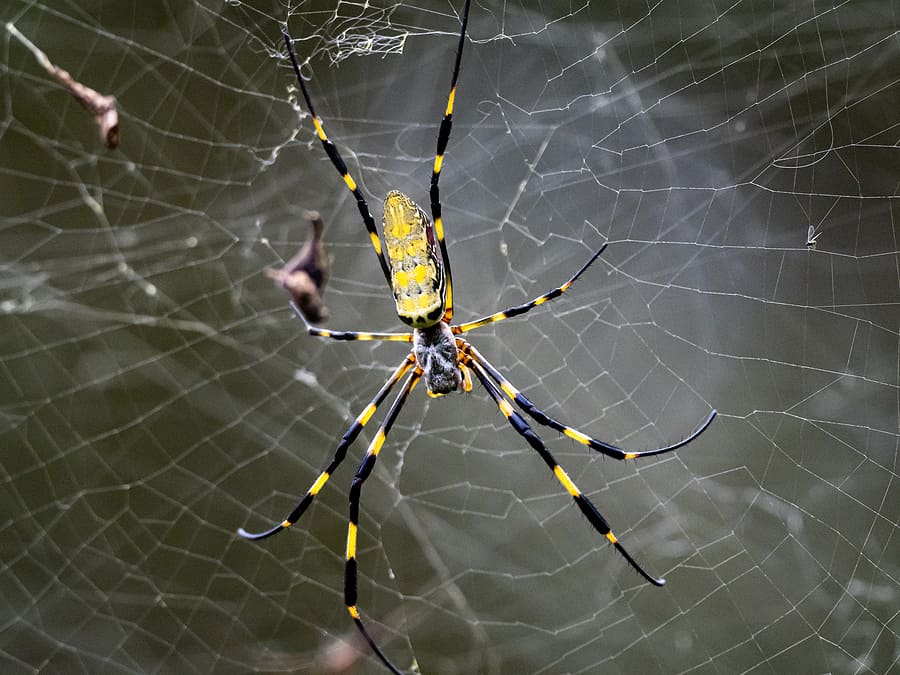
The Joro spider, also known as Trichonephila clavata, is a member of the recognizable orb weaver family. These particular spiders are characterized by their large size (up to 3 inches in length with their legs extended) and yellow and blue-black striped backs with red undersides. Joro spiders are known for constructing large, wagon-wheel shaped webs that are a golden color. These webs can be several feet in length.
Joro spiders are native to Asia, particularly Japan, China, Korea, and Taiwan. In 2014, the first instance of the Joro spider in North America was confirmed in North Georgia. Subsequent sightings have been confirmed as far away as Greenville, South Carolina. It is unclear how and when these spiders first arrived here in Georgia but researchers believe they are here to stay. In fact, researchers have confirmed their presence in at least 25 counties in the state.
Joro spiders are not considered harmful to humans or pets. They will bite when provoked but are not considered a threat. Joros are beneficial to have around as they are one of the only species known to eat adult brown marmorated stinkbugs. They also help keep mosquito and other nuisance pest populations in check. Joro spiders do have predators in our area; both birds and wasps will eat them.
The jury is still out on whether or not there will be any long-term ramifications on local ecosystems. One thing all the researchers agree on is that the Joro spider is likely here to stay.
Are Carpenter Ants Active During the Winter?
Why Identifying Spiders is Important for Prevention